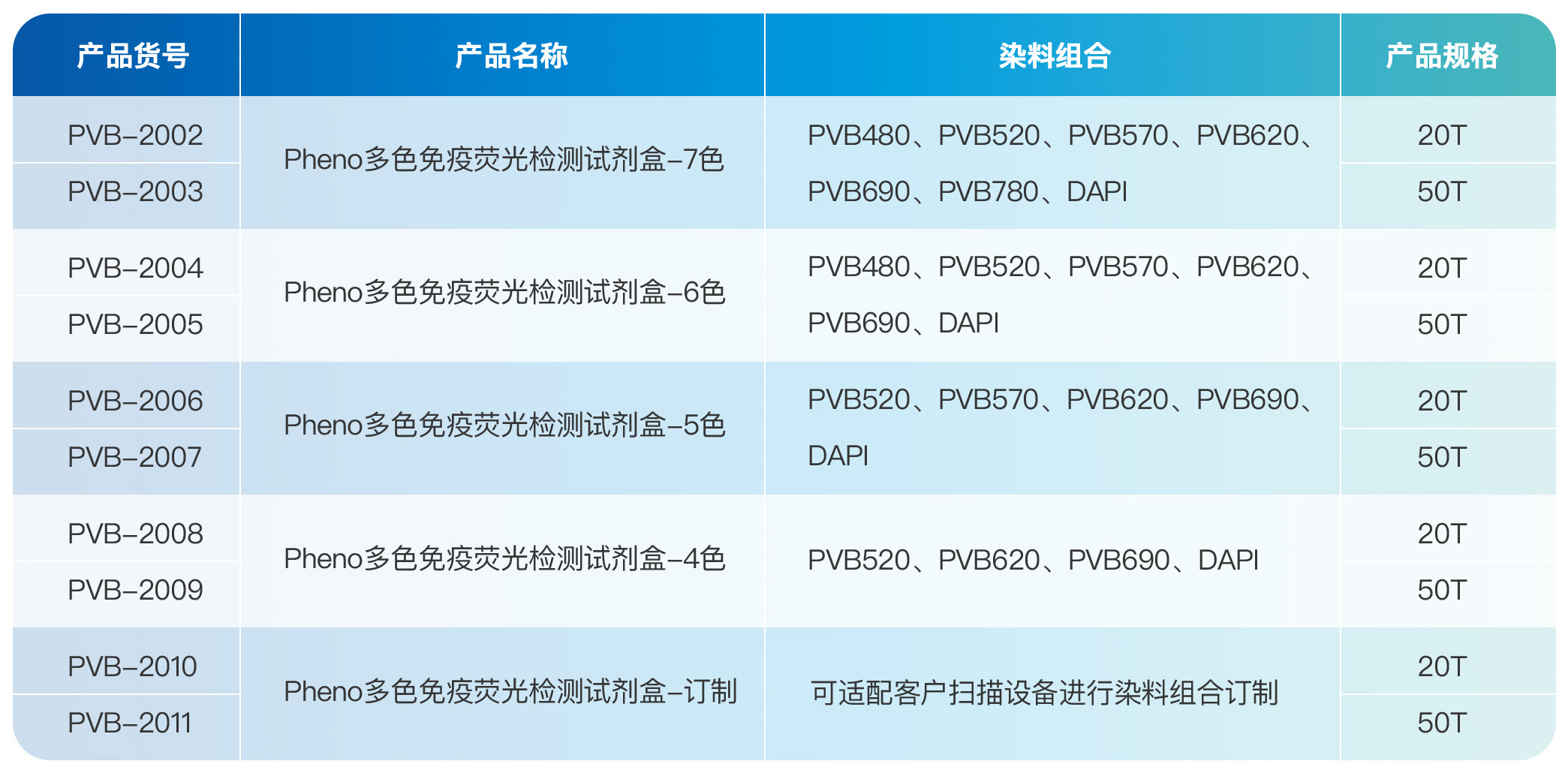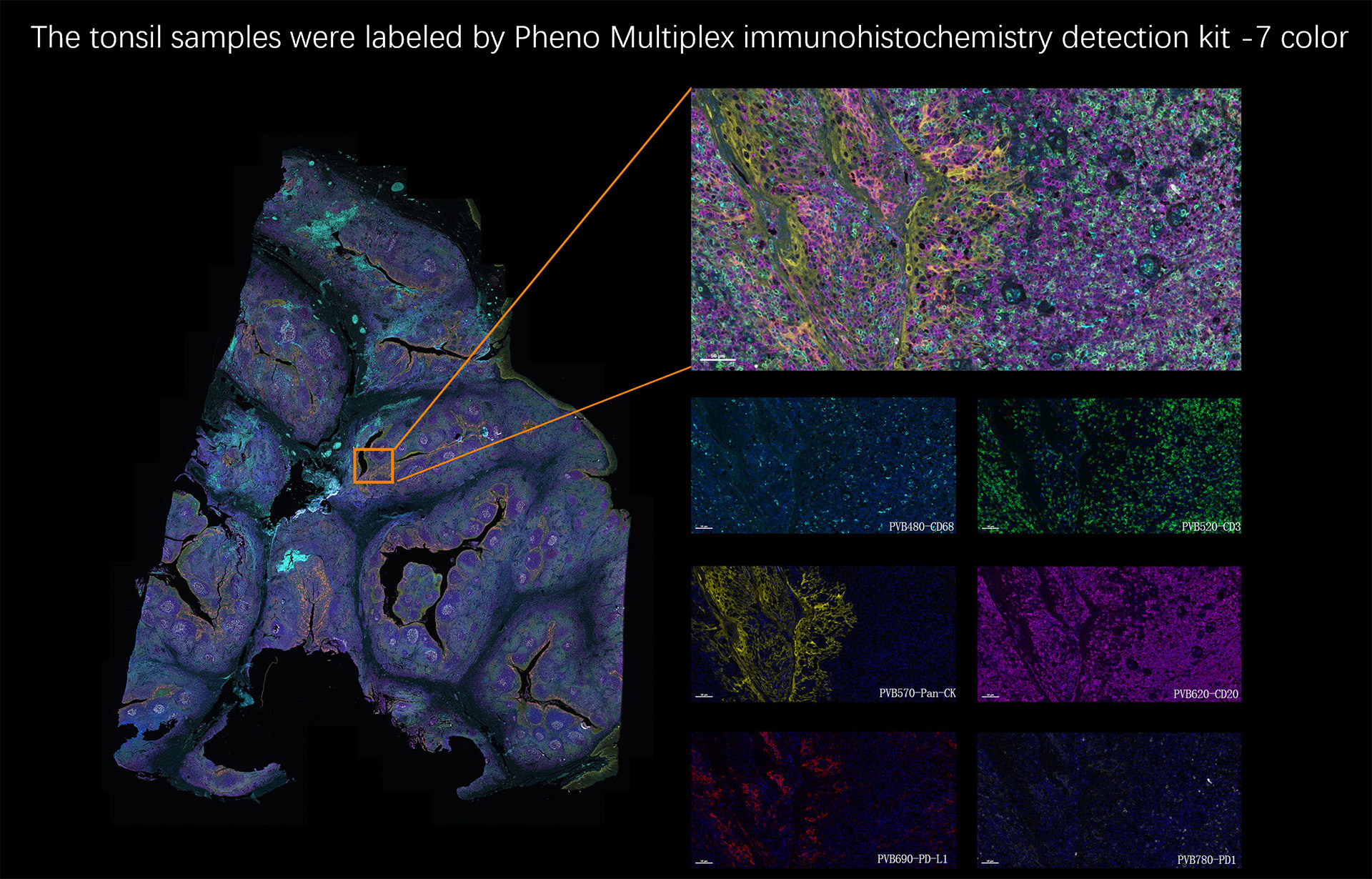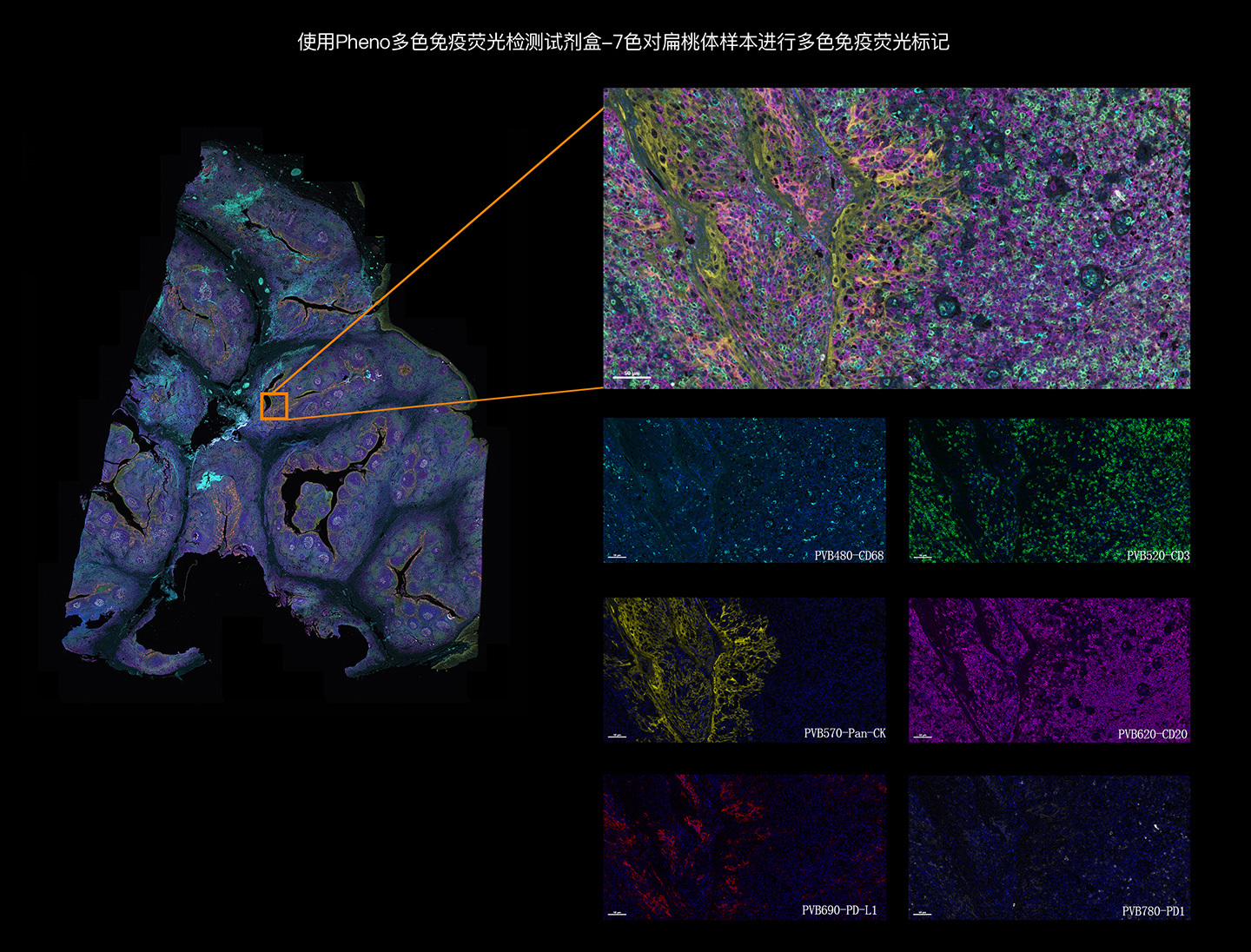The Pheno Multiplex Immunofluorescence Detection Kit allows for the simultaneous fluorescent labeling of up to six proteins in FFPE (Formalin-Fixed Paraffin-Embedded) tissue sections. Utilizing Tyramide Signal Amplification (TSA) technology, it can be applied to any type of tissue. This kit enables the study of expression and distribution relationships among multiple proteins at the tissue and cellular levels, making it a powerful tool for in-depth research on tissue microenvironments and the development of biomarkers.
After sequentially binding the primary antibody, secondary antibody, and TSA fluorophore molecule, the expression of the first protein is successfully labeled. Through microwave repair, the antigen-antibody complexes from the previous round are removed. The fluorophore molecules bound around the antigen are not affected by the microwave or antibody removal and are retained as a fluorescent marker for the antigen-positive cells. In the next round of staining with primary antibody, secondary antibody, and TSA fluorophore, new fluorophore molecules bind around the new target protein. By repeating this fluorescent labeling process multiple times, multiple target proteins can be detected on a single tissue section without the risk of antibody cross-reactivity.











